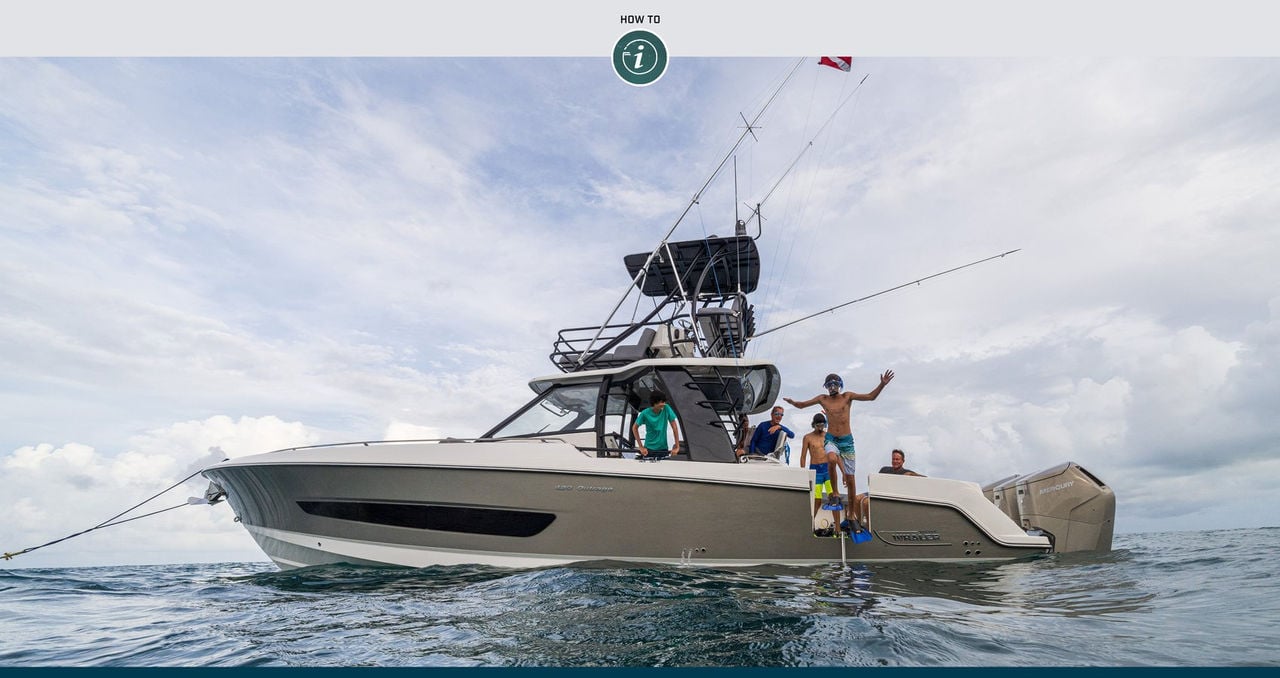Anchoring a boat would seem as simple as lowering the anchor to the bottom and cleating off the line, but many boaters have difficulty with the task. And it’s crucial to know how to anchor your boat because if you ever run out of fuel or lose power for any reason, being able to stay in the same spot can become critically important.
The first step to anchoring your boat is making sure you have the proper anchor and “ground tackle,” the chain and line that are attached to it. If you’re not sure that you already have the ideal gear aboard for the type of bottom you’ll be anchoring, be sure to check out our Choosing the Best Anchor blog. Assuming you do, the process begins by lowering the anchor until it hits bottom. And we do mean lowering, not throwing. Throwing an anchor is never a good idea — it doesn’t accomplish anything, and it could potentially cause the anchor and ground tackle to tangle. It can also lead to injury, and nobody wants that to happen.
When the anchor hits bottom, don’t cleat it off just yet. Here is when you let out additional line, called “scope,” so the boat tugs on the anchor line at an angle rather than straight up and down. Letting out an insufficient amount of scope is one of the most common reasons why anchors drag or pull free, so it’s important to make sure you let out enough. Judge how much is necessary by checking the water’s depth and considering the conditions. A scope-to-depth ratio of 3:1 is the bare minimum for anchoring in the best of conditions. Setting out 5:1 is considered appropriate for average conditions. And in rough weather a scope of 7:1 or even 9:1 may be necessary.
If there’s a breeze or current, paying out the scope is easy. But in calm conditions you’ll probably need to put the boat into reverse as you pay out the line to ensure that it doesn’t pile up directly below you on the bottom. Once the scope is out and the anchor line begins to come tight, you can secure it to a bow cleat. Remember that anchor lines should always be secured at the bow, not the stern, because the anchor can hold the stern down if a big wave comes along, increasing the chances of the wave swamping your boat.
With the anchor now secured, bump the boat into reverse for a moment to help it dig in. Then monitor your position for a minute or two to be sure the anchor has set properly and that your boat is staying in place.
With your anchor dug into the bottom and secured to a bow cleat, you can sit back and relax, right? Well, not entirely! Experienced boaters know that anchors can break free even after they’re properly set. Changing conditions can change the angle of tension on the anchor and cause it to drag, waves that hit the bow can jerk it out, and sometimes an anchor pops free for no apparent reason. So always monitor your position, especially as the wind or tide changes. And if you jump off the boat for a swim or take a stroll down a deserted beach, remember to keep watch over your vessel to ensure that it will still be there wh




